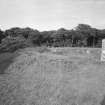Following the launch of trove.scot in February 2025 we are now planning the retiral of some of our webservices. Canmore will be switched off on 24th June 2025. Information about the closure can be found on the HES website: Retiral of HES web services | Historic Environment Scotland
Thrumster Mains
Broch (Iron Age)
Site Name Thrumster Mains
Classification Broch (Iron Age)
Canmore ID 8963
Site Number ND34NW 1
NGR ND 33195 45059
Datum OSGB36 - NGR
Permalink http://canmore.org.uk/site/8963
- Council Highland
- Parish Wick
- Former Region Highland
- Former District Caithness
- Former County Caithness
ND34NW 1 33195 45059.
See also ND34NW 20.2.
(ND 3319 4505) Broch (NR) (remains of)
OS 1:10,000 map, (1975)
Broch, Thrumster: This broch has had the remains of its structure cleared out and a portion of the wall to the S removed - in which place are the ruins of a summer-house. The interior diameter is 36ft and the wall is 15ft thick at the base.
When excavated a skeleton was found buried in a cist of slabs in the mould heaped against the outside of the fabric. Also believed to have been found was a long- handled weaving comb presented to the Natioanl Museum of Antiquities of Scotland (NMAS) in 1783 by Mr Innes of Thrumster (Accession no: GA 66).
RCAHMS 1911.
This broch has a diameter of 20m over walls 4.3m thick. The turf-topped wall is in fair condition except on the S where a portion has been removed entirely to accommodate a modern building and here and there the outer and inner wall faces are crumbling. The wall has a maximum external height of 1.5m on the W side and an average internal height of 1.2m. The interior of the broch has been cleared out. The entrance was probably on the S.
Revised at 1:2500.
Visited by OS (W D J) 22 April 1963.
No change to the previous field report.
Visited by OS (J B) 19 August 1982.
This broch lies at the N end of a broad flat-topped ridge about 190m ESE of Thrumster Mains. It measures 11.1m in diameter within a wall 3.8m in thickness and still standing up to 1.4m in height in eight courses. The inner and outer faces of the wall remain largely intact, except on the S, where the wall has been completely removed to provide the building material for a gothic-style summer house (ND34NW 20.02) inserted at this point. The entrance was probably on the S, opening out onto the ridge.
(YARROWS04 424)
Visited by RCAHMS (ARG) 29 July 2004.
Publication Account (2007)
ND34 10 THRUMSTER (‘Thrumster Mains’) ND/3319 4505 (visited in 1971)
Probable solid-based broch in Wick, Caithness, which was cleared out some time before 1910 – possibly at the end of the 18th century judging from the comb (below) – and had part of the wall on the south side removed to accommodate a summerhouse. The greatest wall height remaining is 1.07m (3ft 6in), and it is now turfed over and fairly secure [1]. During the clearance a cist containing a skeleton was found in the rubbish piled against the outer wallface. A long-handled weaving comb, presented to the National Museum in 1783 by Mr Innes of Thrumster (GA 66), is believed to have come from this site [2].
Dimensions: interior diameter 10.98m (36ft), the wall 4.48m (15ft) thick at the base. In 1971 a new survey of the central court showed that this had been laid out close to an exact circle with a radius of 6.13 +/- 0.04m, giving a diameter of 12.26m (40.2ft), somewhat larger than earlier measurements suggested.
Sources: 1. NMRS site no. ND 34 NW 1: 2. RCAHMS 1911b, 145, no. 502: 3. Batey 2002, 188.
E W MacKie 2007
Excavation (4 July 2011 - 24 July 2011)
As part of the Yarrows Heritage Project the Yarrows Heritage Trust embarked on the excavation of the broch at Thrumster. The excavation was undertaken by volunteers supervised by AOC, from 4–24 July 2011.
Thrumster Broch is on Thrumster Mains, a sporting estate in Caithness. Part of the broch was dismantled in the late 18th century for use as a garden feature and, later, to make way for the construction of a summer house, which still stands. Records state that human remains were discovered and subsequently reburied 20 paces from the summer house. A long-handled weaving comb, presented to the National Museum in 1783 by Mr Innes of Thrumster is believed to have come from this site.
Previously unexcavated, the broch was believed to be solid-walled. However, the structure was found to feature intra-mural galleries and at least one cell (to the N). The inner and outer walls each consist of three concentric layers of stonework. It has previously been believed that the entranceway had been in the S of the building, obliterated by the building of the summerhouse. However, an entranceway, blocked in antiquity, was discovered in the NW. It was paved with massive stone slabs and subsequently infilled. The galleries in the N were also filled with large stones. Fracturing in the wall faces suggest that this area of the monument had been subjected to severe structural stresses. It is possible that the resultant damage led to the infilling of the features in this area and relocation of the entranceway in an attempt to stabilise the structure. Disarticulated human remains were found in the infill of the gallery in the NW of the structure. The site proved rich in radiocarbon datable remains and the structural sequence is being explored with a series of radiocarbon dates.
Archive: RCAHMS (intended)
Funder: Highland Leader+; Highland Council; Heritage Lottery Fund and Scottish Natural Heritage
AOC Archaeology Group, 2011













![Pen and wash illustrations of section across Thrumster Mains broch (scale 4 feet to 1 inch [1:48]) and section, viewed from W, across broch and the mound on which it sits in 1871(scale 20 feet to 1 inch [1:240]).](http://i.rcahms.gov.uk/canmore/l/DP00090944.jpg)

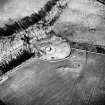
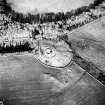
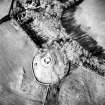

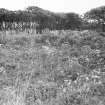
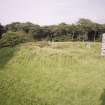
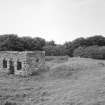
![Pen and wash illustrations of section across Thrumster Mains broch (scale 4 feet to 1 inch [1:48]) and section, viewed from W, across broch and the mound on which it sits in 1871(scale 20 feet to 1 inch [1:240]).](http://i.rcahms.gov.uk/canmore/s/DP00090944.jpg)
